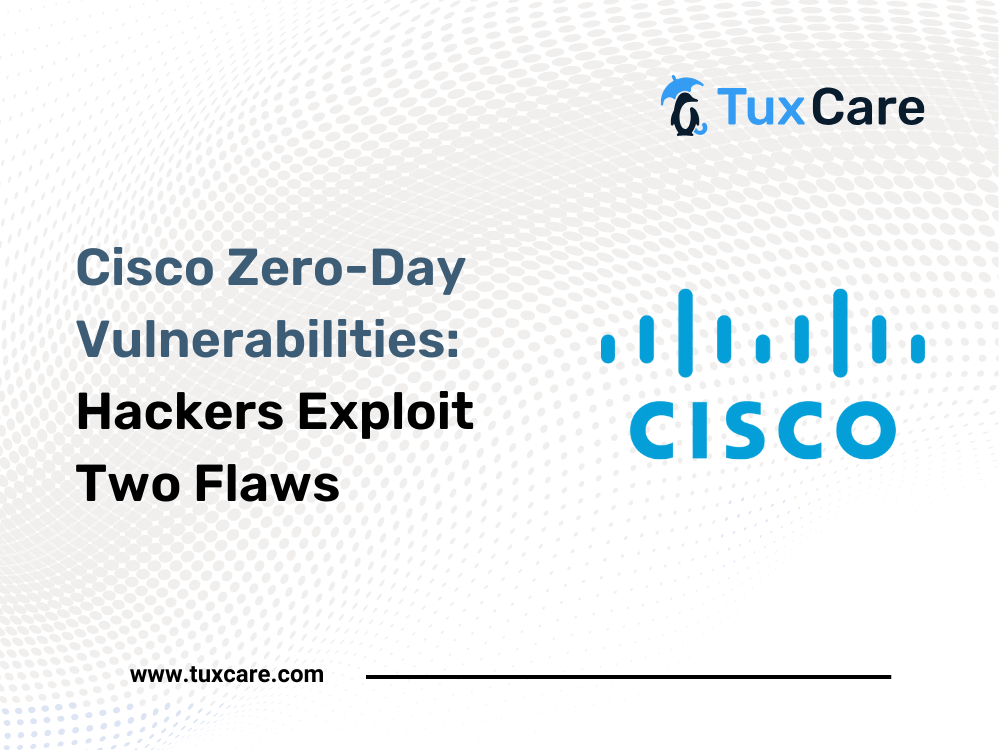Cisco Zero-Day Vulnerabilities: Hackers Exploit Two Flaws
Recent cybersecurity alerts have illuminated a concerning trend: threat actors exploiting Cisco zero-day vulnerabilities’ networking equipment. Dubbed ArcaneDoor by Cisco Talos, this sophisticated malware campaign has raised alarms due to its covert data collection and advanced tactics. Let’s have a look into the details of these Cisco zero-day vulnerabilities and explore its implications for network security.
Cisco Zero-Day Exploited: Tactics and Techniques
ArcaneDoor, orchestrated by the elusive state-sponsored actor UAT4356, employs a multifaceted approach to infiltrate target environments. At the core of this campaign are two backdoors named ‘Line Runner’ and ‘Line Dancer.’ These malicious components work in tandem to execute a range of nefarious activities, including configuration manipulation, reconnaissance, and network traffic interception.
Exploiting Cisco Zero-Day Vulnerabilities
The ArcaneDoor campaign hinges on the exploitation of two critical vulnerabilities within Cisco Adaptive Security Appliance and Firepower Threat Defense Software:
- CVE-2024-20353: This vulnerability, with a CVSS score of 8.6, exposes a denial-of-service flaw in Cisco’s web services, rendering systems susceptible to disruptive attacks.
- CVE-2024-20359: With a CVSS score of 6.0, this vulnerability enables persistent local code execution, granting attackers the ability to execute arbitrary code with root-level privileges.
These Cisco security flaws, by leveraging undisclosed security loopholes, provide malicious actors with a gateway into vulnerable systems, highlighting the urgent need for comprehensive patching and mitigation strategies.
Threat Actor Mitigation Strategies
In response to the Cisco zero-day vulnerabilities, the U.S. Cybersecurity and Infrastructure Security Agency (CISA) has added the identified vulnerabilities to its Known Exploited Vulnerabilities (KEV) catalog. Federal agencies are mandated to apply vendor-provided fixes by May 1, 2024, underscoring the criticality of timely remediation efforts.
Understanding Initial Access Pathways
Although the precise means of initial entry remain undisclosed, indications point to UAT4356 preparing for the breach as far back as July 2023. Once established, the threat actors deploy Line Dancer and Line Runner implants to establish persistent backdoors within target environments.
Line Dancer, an in-memory backdoor, empowers attackers to execute shellcode payloads and orchestrate clandestine activities such as disabling system logs and exfiltrating data. Meanwhile, Line Runner, a HTTP-based Lua implant, operates as a persistent backdoor on Cisco Adaptive Security Appliances, facilitating data retrieval and information exfiltration.
UAT4356 exhibits a high degree of sophistication in evading detection, employing intricate methods to obscure digital footprints and thwart memory forensics. This meticulous approach underscores the threat actor’s comprehensive understanding of Cisco’s network infrastructure and forensic methodologies.
Determining the precise origins of the ArcaneDoor campaign poses a formidable challenge. While Cisco Talos refrains from explicitly attributing the attack to a specific nation-state, past incidents suggest the involvement of state-backed hackers from countries like China and Russia. The lack of definitive attribution underscores the complexity of cybersecurity investigations in the digital landscape.
Implications for Network Security
The ArcaneDoor campaign underscores the critical importance of securing perimeter network devices. As primary gateways for data ingress and egress, devices such as firewalls and VPNs represent lucrative targets for threat actors seeking to infiltrate organizational networks. To mitigate such risks, organizations must prioritize routine patching, maintain up-to-date hardware and software configurations, and implement robust monitoring mechanisms as well as consider network security best practices.
Conclusion
The ArcaneDoor campaign serves as a stark reminder of the evolving threat landscape facing modern organizations. By exploiting zero-day vulnerabilities and deploying sophisticated infiltration tactics, threat actors pose a formidable challenge to network security. Moving forward, proactive measures such as comprehensive patch management for Cisco devices, enhanced threat detection capabilities, and cross-industry collaboration are imperative to fortify cyber defenses and mitigate the risk posed by emerging threats like ArcaneDoor. Stay protected with the latest Cisco security updates.
The sources for this piece include articles in The Hacker News and SC Media.



 Documentation
Documentation Login
Login




